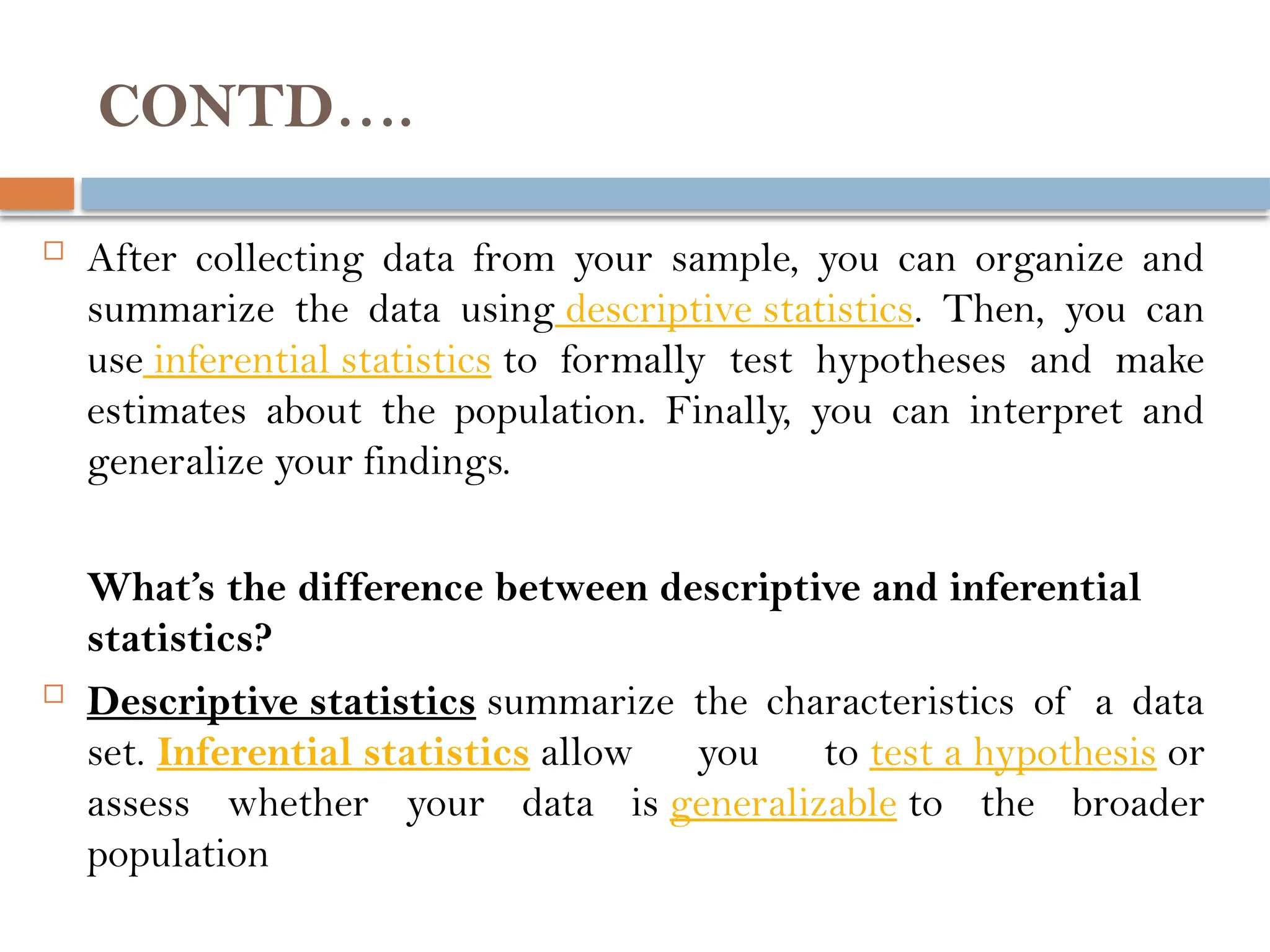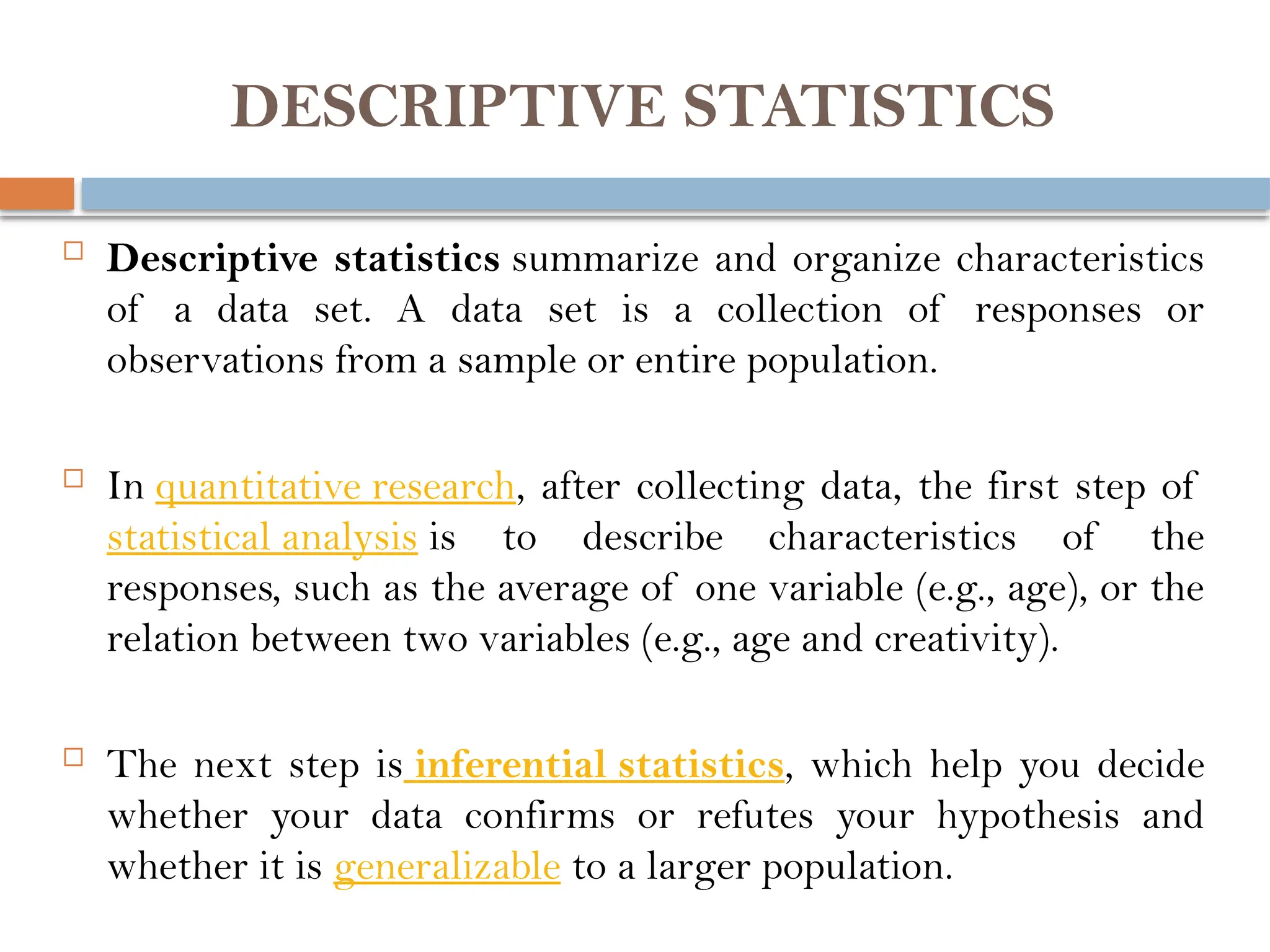The document provides an overview of statistical analysis, emphasizing its importance in research for investigating trends using quantitative data. It distinguishes between descriptive statistics, which summarize data characteristics, and inferential statistics, which test hypotheses and make population estimations. The document also details types of descriptive statistics, measures of central tendency, and variability, guiding researchers on how to analyze and interpret their data effectively.









